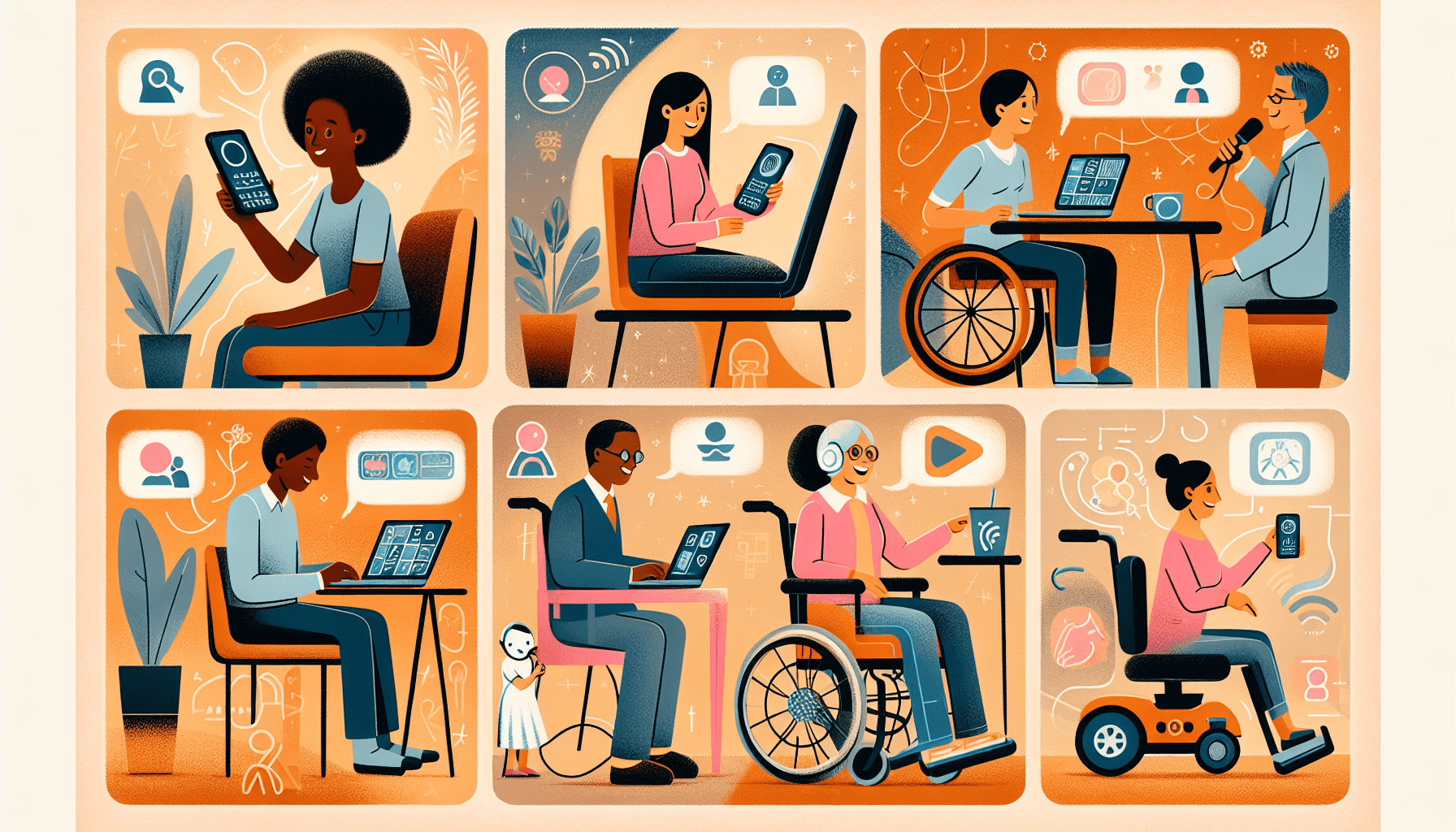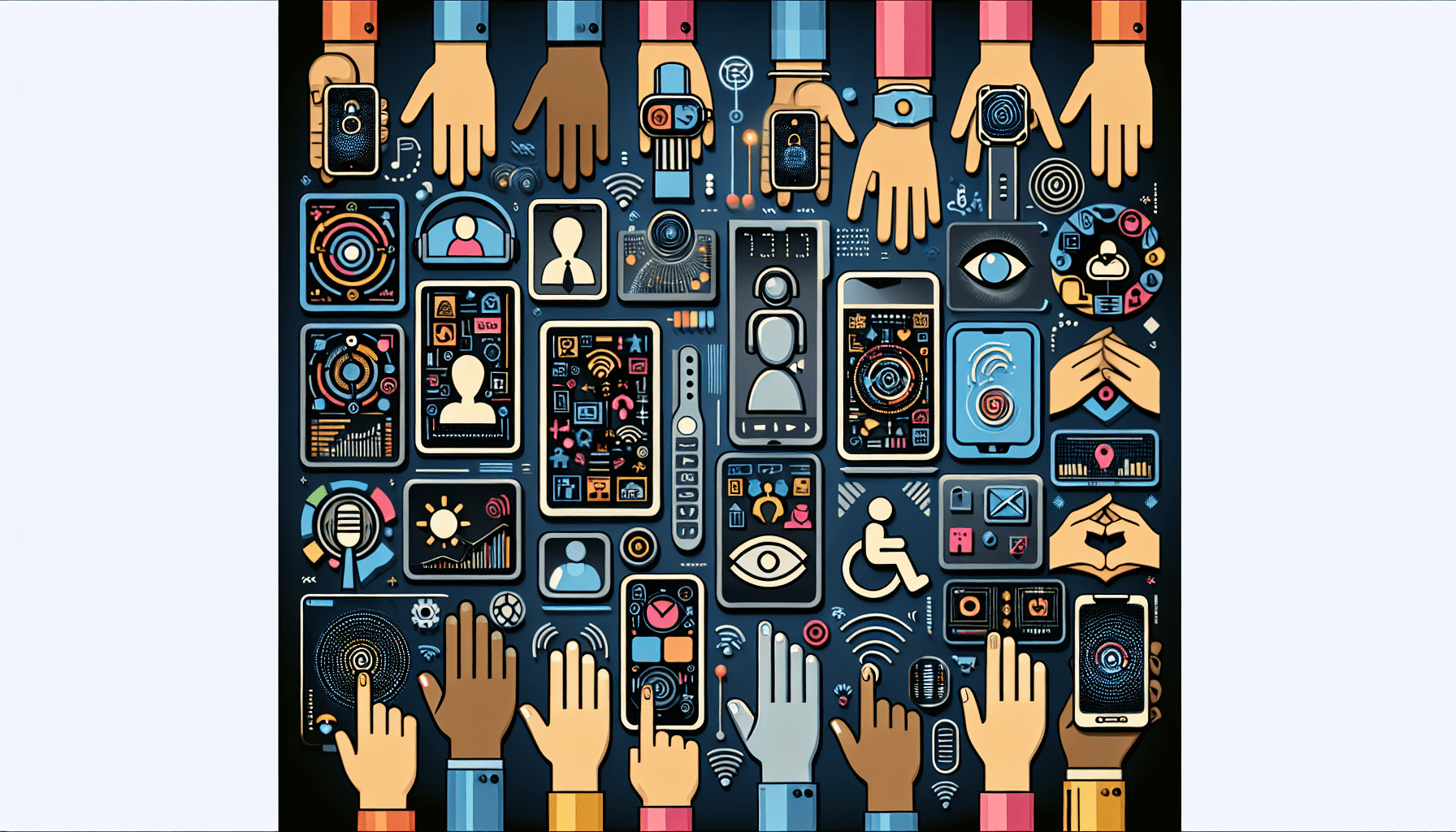Are you passionate about AI powered assistants and their impact on inclusivity? Our article, “Inclusive Design For Virtual Assistant Accessibility Across Abilities,” dives into the importance of creating virtual assistants that cater to individuals with diverse abilities. With a minimum of 2500 words, it provides a comprehensive and friendly exploration of this subject, ensuring an engaging read for everyone. From proper headings to the effective use of videos and alt text, we’ve crafted this article to be accessible to all. Join us as we delve into the world of inclusive design for virtual assistants!
Understanding Inclusive Design
Definition of inclusive design
Inclusive design is a design approach that aims to create products, services, and environments that can be used by people with diverse abilities, including those with disabilities. It emphasizes the importance of considering and accommodating the needs and preferences of all users, regardless of their physical, sensory, cognitive, or other impairments.
Importance of inclusive design
Inclusive design is crucial because it ensures that everyone, regardless of their abilities, can access and benefit from technology. By embracing inclusive design principles, virtual assistant developers can create products that are usable and enjoyable for a wider range of users. This not only promotes equal access and opportunities but also enhances the overall user experience.
Benefits of inclusive design
There are numerous benefits to incorporating inclusive design into the development of virtual assistants. Firstly, it expands the potential user base and increases market reach by catering to the needs of individuals who may have previously been excluded. Secondly, it fosters innovation by encouraging creative solutions that consider a variety of perspectives. Additionally, inclusive design can lead to improved usability for all users, as features designed for accessibility often enhance the user experience for everyone.
Challenges in Virtual Assistant Accessibility Across Abilities
Physical disabilities
Physical disabilities present unique challenges for virtual assistant accessibility. Individuals with limited mobility may find it difficult to interact with traditional user interfaces, such as keyboards or touch screens. It is important to adapt user interfaces and provide alternative input methods, such as voice commands or gestures, to ensure inclusivity for individuals with physical disabilities.
Visual impairments
For individuals with visual impairments, virtual assistant accessibility involves considerations such as high contrast colors, clear typography, and screen reader compatibility. By implementing these features, virtual assistants can provide a visually accessible experience and ensure that individuals with visual impairments can effectively interact with the technology.
Hearing impairments
Hearing impairments require special attention in virtual assistant accessibility. Features such as closed captioning, transcripts, vibration and visual alerts, as well as speech-to-text and text-to-speech capabilities, can greatly enhance the accessibility of virtual assistants for individuals with hearing impairments.
Cognitive impairments
Virtual assistant accessibility for individuals with cognitive impairments involves simplifying user interfaces, providing clear and concise instructions, and avoiding information overload. By considering these factors, virtual assistants can be more inclusive for individuals with cognitive impairments, ensuring they can effectively and comfortably use the technology.

Physical Accessibility Considerations
Adapting user interfaces for physical disabilities
To make virtual assistants physically accessible, it is important to adapt user interfaces to accommodate individuals with physical disabilities. This can include options for larger buttons, customizable layouts, or alternative input methods such as voice commands or gestures. By considering the unique needs of individuals with physical disabilities, virtual assistants can become more inclusive and usable for a wider range of users.
Implementing voice commands and gestures
Voice commands and gestures can greatly enhance the accessibility of virtual assistants for individuals with physical disabilities. By allowing users to interact with the technology through natural language or intuitive movements, virtual assistants become more accessible and reduce reliance on traditional input methods that may be challenging for individuals with limited mobility.
Providing alternative input methods
In addition to voice commands and gestures, providing alternative input methods is crucial for physical accessibility. This can include options such as switch control, eye-tracking, or assistive devices that allow individuals with physical disabilities to interact with virtual assistants in a way that suits their unique needs and abilities.
Visual Accessibility Considerations
Using high contrast colors and clear typography
Using high contrast colors and clear typography is essential for visual accessibility. By ensuring that text and visual elements have sufficient contrast, individuals with visual impairments can effectively read and understand the content displayed by virtual assistants. Clear typography further enhances readability, making the information more accessible to individuals with varying vision abilities.
Implementing screen reader compatibility
Screen reader compatibility is a critical aspect of visual accessibility. Virtual assistants should be designed to work seamlessly with screen readers, enabling individuals with visual impairments to navigate and interact with the content using auditory cues. By implementing screen reader compatibility, virtual assistants can ensure equal access to information for all users.
Including descriptive alt text for images
To make virtual assistants more visually accessible, it is important to include descriptive alt text for images. Alt text provides textual descriptions of images, allowing individuals who are visually impaired to understand the content conveyed through visual elements. By including descriptive alt text, virtual assistants become more inclusive and enable individuals with visual impairments to fully engage with the information presented.

Hearing Accessibility Considerations
Providing closed captioning and transcript options
To ensure hearing accessibility, virtual assistants should provide closed captioning and transcript options. Closed captioning allows individuals with hearing impairments to read the spoken dialogue and sound effects, while transcripts provide a text-based representation of the audio content. By offering these features, virtual assistants enable individuals with hearing impairments to fully comprehend and engage with the information presented.
Implementing vibration and visual alerts
Vibration and visual alerts are important considerations for individuals with hearing impairments. By incorporating these features into virtual assistants, users can receive notifications and alerts through tactile or visual cues instead of relying solely on auditory prompts. This enhances the accessibility and usability of virtual assistants for individuals with hearing impairments.
Using speech-to-text and text-to-speech capabilities
Speech-to-text and text-to-speech capabilities are valuable tools for hearing accessibility. By converting spoken words into written text and vice versa, virtual assistants ensure that individuals with hearing impairments can effectively communicate and understand the content. Implementing speech-to-text and text-to-speech capabilities enhances the inclusivity of virtual assistants across different abilities.
Cognitive Accessibility Considerations
Simplifying user interfaces and interactions
To promote cognitive accessibility, virtual assistants should have user interfaces and interactions that are simple and intuitive. Complex or cluttered interfaces can overwhelm individuals with cognitive impairments, making it difficult for them to navigate and understand the content. By simplifying the design and interactions, virtual assistants become more inclusive and user-friendly for individuals with cognitive impairments.
Providing clear and concise instructions
Clear and concise instructions are essential for cognitive accessibility. Virtual assistants should provide step-by-step guidance and instructions that are easy to understand and follow. By avoiding ambiguity and using plain language, virtual assistants can ensure that individuals with cognitive impairments can effectively use the technology and engage with the provided information.
Avoiding overwhelming information overload
To enhance cognitive accessibility, virtual assistants should avoid overwhelming users with excessive information. Presenting information in a concise and organized manner helps individuals with cognitive impairments process and retain the information more effectively. By focusing on the essential content and avoiding unnecessary complexity, virtual assistants become more accessible for individuals with cognitive impairments.
User Testing and Feedback for Accessibility
Importance of user testing for accessibility
User testing is crucial for ensuring the accessibility of virtual assistants. By engaging individuals with diverse abilities, including those with disabilities, in the testing process, developers can identify barriers and make necessary improvements to enhance accessibility. User testing helps uncover usability issues that may have been overlooked during the design and development phase, ensuring that virtual assistants meet the needs of all users.
Involving users with diverse abilities in testing
Involving users with diverse abilities in testing is essential to obtain valuable insights and feedback. By including individuals with disabilities, developers can gain a deeper understanding of the unique challenges they face and identify areas for improvement. This collaborative approach ensures that virtual assistants are designed with inclusivity in mind, meeting the needs of a diverse user base.
Collecting and implementing feedback for improvement
Collecting and implementing feedback from users with diverse abilities is vital for continuous improvement. By actively seeking feedback and suggestions, developers can address any accessibility concerns and make necessary adjustments to enhance the virtual assistant experience for all users. User feedback plays a crucial role in refining the accessibility features and ensuring that virtual assistants remain inclusive and user-friendly over time.
Collaboration with Accessibility Organizations
Partnerships with disability advocacy groups
Collaborating with disability advocacy groups is an effective way to promote inclusivity and accessibility. These organizations possess valuable expertise and insights into the challenges faced by individuals with disabilities. By partnering with them, virtual assistant developers can tap into their knowledge and receive guidance for designing inclusive products that meet the needs of individuals with diverse abilities.
Working with accessibility experts and consultants
Accessibility experts and consultants can provide valuable guidance and recommendations for improving virtual assistant accessibility. Their expertise in inclusive design and accessibility standards can help developers identify potential barriers and implement effective solutions. Working with accessibility experts ensures that virtual assistants adhere to best practices and meet the highest standards of accessibility.
Engaging with assistive technology manufacturers
Engaging with assistive technology manufacturers facilitates collaboration and knowledge exchange. By working closely with these manufacturers, virtual assistant developers can ensure compatibility with existing assistive devices, such as screen readers or alternative input methods. This collaboration enables seamless integration between virtual assistants and assistive technologies, enhancing overall accessibility and usability.
Regular Accessibility Audits and Updates
Conducting regular accessibility audits
Conducting regular accessibility audits is essential to identify and address any accessibility issues. These audits involve evaluating the virtual assistant’s compliance with accessibility standards and guidelines. By assessing the software, interface, and interactions, developers can proactively identify and resolve any barriers or shortcomings, ensuring ongoing accessibility and usability.
Addressing any accessibility issues promptly
When accessibility issues are identified, it is crucial to address them promptly. This involves making necessary adjustments and improvements to enhance the accessibility of virtual assistants. By prioritizing prompt resolutions, developers can minimize barriers for individuals with disabilities and ensure that the technology remains accessible to all users.
Keeping up with evolving accessibility standards
Staying informed about evolving accessibility standards is essential for maintaining the accessibility of virtual assistants. Accessibility guidelines and standards are updated periodically to reflect advancements and best practices. By actively keeping up with these changes, virtual assistant developers can ensure that their products remain up to date and inclusive, meeting the evolving needs of users with diverse abilities.
Promoting Inclusive Design Beyond Virtual Assistants
Applying inclusive design principles to other technologies
Promoting inclusive design extends beyond virtual assistants. By applying inclusive design principles to other technologies, developers can create inclusive experiences across a wide range of digital products and services. This includes websites, mobile applications, and other interactive interfaces. Embracing inclusive design principles in all aspects of technology ensures equal access and opportunities for individuals with diverse abilities.
Raising awareness and advocating for accessibility
Raising awareness about accessibility is essential for promoting inclusive design. By educating the public and key stakeholders about the importance and benefits of accessibility, virtual assistant developers can foster a culture of inclusivity. Advocating for accessibility encourages the consideration of diverse abilities in the design and development process, leading to more inclusive technology solutions.
Encouraging other companies to prioritize inclusivity
Virtual assistant developers can play a vital role in encouraging other companies to prioritize inclusivity. By sharing success stories, best practices, and the benefits of inclusive design, developers can inspire others to embrace accessibility. Collaborating with industry leaders and participating in events or conferences dedicated to inclusivity can help create a movement where companies across various sectors prioritize inclusion and accessibility.


